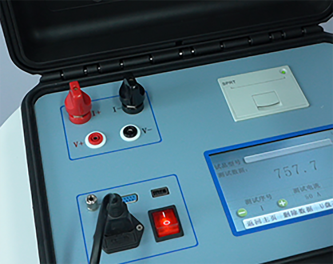 English
English


tan delta of transformer oil
Understanding Tan Delta of Transformer Oil
Transformer oil plays a critical role in the insulation and cooling of electrical transformers. One of the essential parameters in assessing the condition of transformer oil is the tan delta (also known as the loss tangent). This measurement provides insights into the oil's dielectric properties and its overall health, which is crucial for ensuring the longevity and efficiency of transformers.
Tan delta is a dimensionless number that represents the ratio of the reactance to the resistance in a dielectric material. In the context of transformer oil, it indicates how much energy is lost as heat when the oil is subjected to an alternating electric field. A low tan delta value signifies that the oil has excellent insulating properties and minimal energy loss, while a higher value suggests increased losses that could indicate deterioration of the oil's insulating capabilities.
The importance of monitoring tan delta in transformer oil cannot be overstated. As transformers operate, their insulation systems are exposed to various stresses, including electrical, thermal, and mechanical factors. Over time, these stresses can degrade the oil, leading to a rise in the tan delta value. Such changes may predate visible signs of oil degradation or transformer failures, making it a vital parameter for predictive maintenance.
tan delta of transformer oil

Regular testing of the tan delta of transformer oil is essential for the early detection of potential issues. The testing process typically involves measuring the capacitance and dissipation factor of the oil at different temperatures and frequencies. By conducting these tests, operators can track changes in tan delta over time, allowing for better-informed maintenance decisions and potential oil replacement.
Furthermore, maintaining an optimal tan delta value not only ensures the reliability of transformer operations but also contributes to the overall safety and efficiency of electrical systems. High tan delta levels can lead to overheating, reduced insulation strength, and ultimately, transformer failure, which can result in costly downtime and repairs.
In conclusion, understanding and monitoring the tan delta of transformer oil is fundamental to transformer maintenance. It serves as an early warning indicator for insulation breakdown and helps maintain the reliable performance of transformer systems. By adopting routine evaluations of this critical property, utility providers and industrial operations can enhance the stability and longevity of their electrical assets, ensuring a consistent power supply and reducing the risk of unexpected outages.
-
Differences between open cup flash point tester and closed cup flash point testerNewsOct.31,2024
-
The Reliable Load Tap ChangerNewsOct.23,2024
-
The Essential Guide to Hipot TestersNewsOct.23,2024
-
The Digital Insulation TesterNewsOct.23,2024
-
The Best Earth Loop Impedance Tester for SaleNewsOct.23,2024
-
Tan Delta Tester--The Essential Tool for Electrical Insulation TestingNewsOct.23,2024





